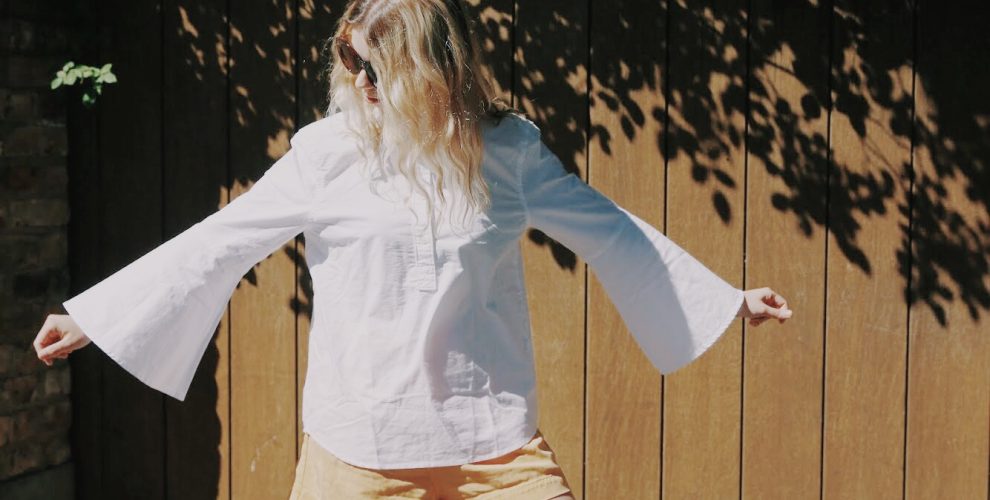This post was sponsored by GANT. All thoughts my own.
In the relatively small amount of time I’ve been running this blog, the awareness on the problems of plastic has grown exponentially. From the growth of the personal zero waste movement to a slow awakening of corporate responsibility, it feels like we’re finally starting to get some sort of movement on this issue, even if it is still small right now. For me, one of the more interesting developments on the plastic front has been the increase in recycling plastic into textiles. Not only does it keep plastic out of landfill, but it reduces the use of virgin resources in production, makes use of things that already exist, and requires a lot less energy to manufacture. Textiles and clothing incorporating recycled plastic aren’t exactly new information to many of us, however it was only recently that I was able to actually test something out myself for the first time, courtesy of the GANT Beacons Project.
The Beacons Project is a collaboration between GANT and fishermen in the Mediterranean, aiming to play a part in removing and reusing the masses of plastic that have unceremoniously ended up in our oceans. Each product, including this Tech Prep Oxford Popover Shirt that I’m wearing, is made using recovered plastic to create the Tech Prep yarns it is formed from. GANT employ the fishermen to gather plastic from shorelines which is then handed over to Seaqual, a fibre brand who convert ocean plastic into a 100% recycled polyester thread that is blended in with cotton threads in an Oxford weave. The result is a piece that beautifully mixes function and style, perfectly tailored to a casual day, office wear, or even the cycle to work. Their products are ethically made in India, and GANT ensures all cotton sourced is either better cotton, organic certified cotton, fair trade cotton, recycled cotton, or close the loop cotton. Buttons are made with recycled plastic, the packaging is made with recycled materials, and all chemicals used have to be compliant to GANT Ecologial Requirements which are based on Oeko-Tex 100 standard and REACH.



Whilst I’ve been familiar with plastic being recycled into textiles for a long time, it was only when sitting down to write about this shirt that I realised I really didn’t know how it was being done. I think this speaks to a wider problem that many of us are have, being disconnected from the clothes we buy. So often people simply see the finished product in front of them, and consider how it could fit into their life. We don’t always think about where something came from, or the many stages of production it actually takes to produce a piece of clothing. It makes so much sense that these materials are converted into threads which are then woven in as a blend, but I’d never stopped to fully consider this process beyond before. Working with GANT meant both that I finally got the chance to see a piece like this for myself, but it has also helped me grow my understanding of the life cycle of textiles. How everything comes together in the supply chain to create the item we see before us, which also helps us to value it beyond just the function it gives us in the moment. It makes the stories of our clothes three dimensional, infusing them with life and encouraging us to think about the myriad processes and people that make these things come together.
And when we understand the process more fully, it also helps us understand why certain elements work better than others. Cotton shirts can be woven in a variety of styles that look completely different, but the Oxford weave is a perfect choice for this piece in particular; both for weaving in the recycled polyester easily, and for creating a flexible shirt. The Oxford weave is one of the oldest styles of weaving, being a type of basket weave with an equal number of the two thread types, warp and weft. The weave is slightly coarser than other choices, making it less silky than some other types of shirt but still smooth to touch. This makes the shirt more flexible to style, as the fabric is perfectly suited for both casual and business attire, and to any environment we may live in. It’s warmer than a poplin shirt and cooler than a twill shirt, making it perfectly adaptable to both hot and cool climates, and giving you the most wear year-round. GANT shirts also contain added bonuses such as breathability, wicking (drawing moisture away from the body to keep you cool and dry) and quick drying. This shirt is a product of consideration of form and function, but also the fullness of the production and supply chain, and that is reflected in the quality.



And, beyond the myriad benefits and considered design, it’s just a fun shirt! I don’t really prescribe to trends, but bell sleeves seem to circle back around every few years, meaning that you can still feel like you’re partaking in contemporary culture a little but in a more timeless, nuanced way that will ultimately transcend seasons. It’s breathable and cool, making it the perfect dressier piece to don while we try to navigate the evenings of this insane heat wave. You can look sophisticated, without feeling suffocated. And at the end of the day, it’s ideal to find a piece that suits your style and your worldview, while also helping you learn a little more about the world around you.







3 Comments